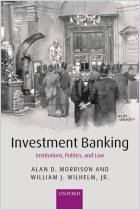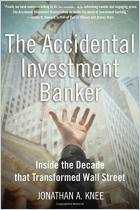
Book
Investment Banking Explained
An Insider's Guide to the Industry
Recommendation
In this comprehensive and accessible text, retired professor and former bank executive Michel Fleuriet examines the history, traditions, models and architecture of the world of investment banking. While many observers view the sector as a quintessentially American story, Fleuriet details how its roots in fact span the globe and the centuries. This second edition highlights post-2008 regulations and evolving bank strategies and functions. Students and investment banking clients will find this a useful reference guide.
Summary
About the Author
Michel Fleuriet is a retired professor at the Wharton School of Finance and a former executive at HSBC France and Merrill Lynch France.
Learners who read this summary also read
Book
Article




















Comment on this summary or Diskussion beginnen